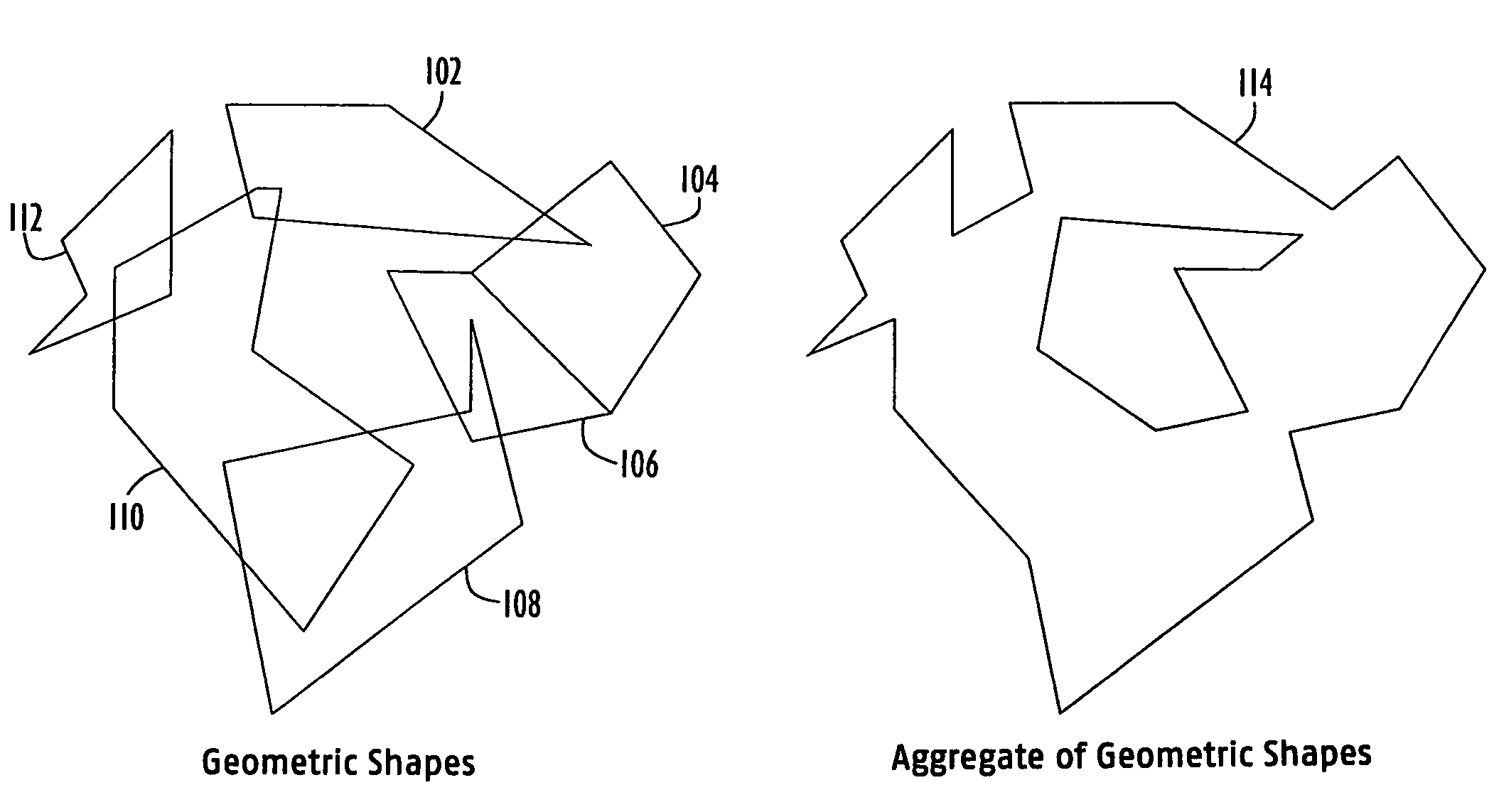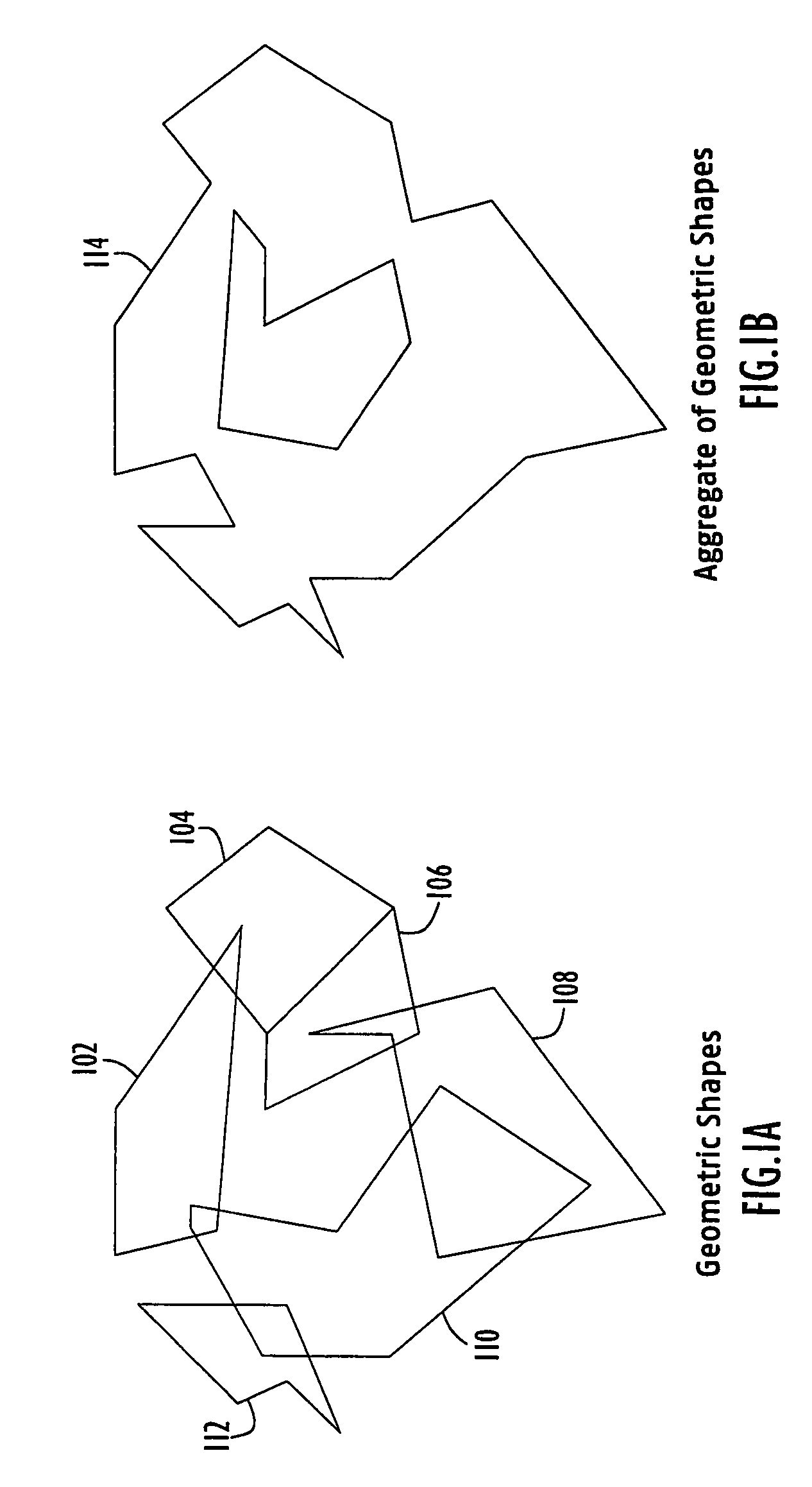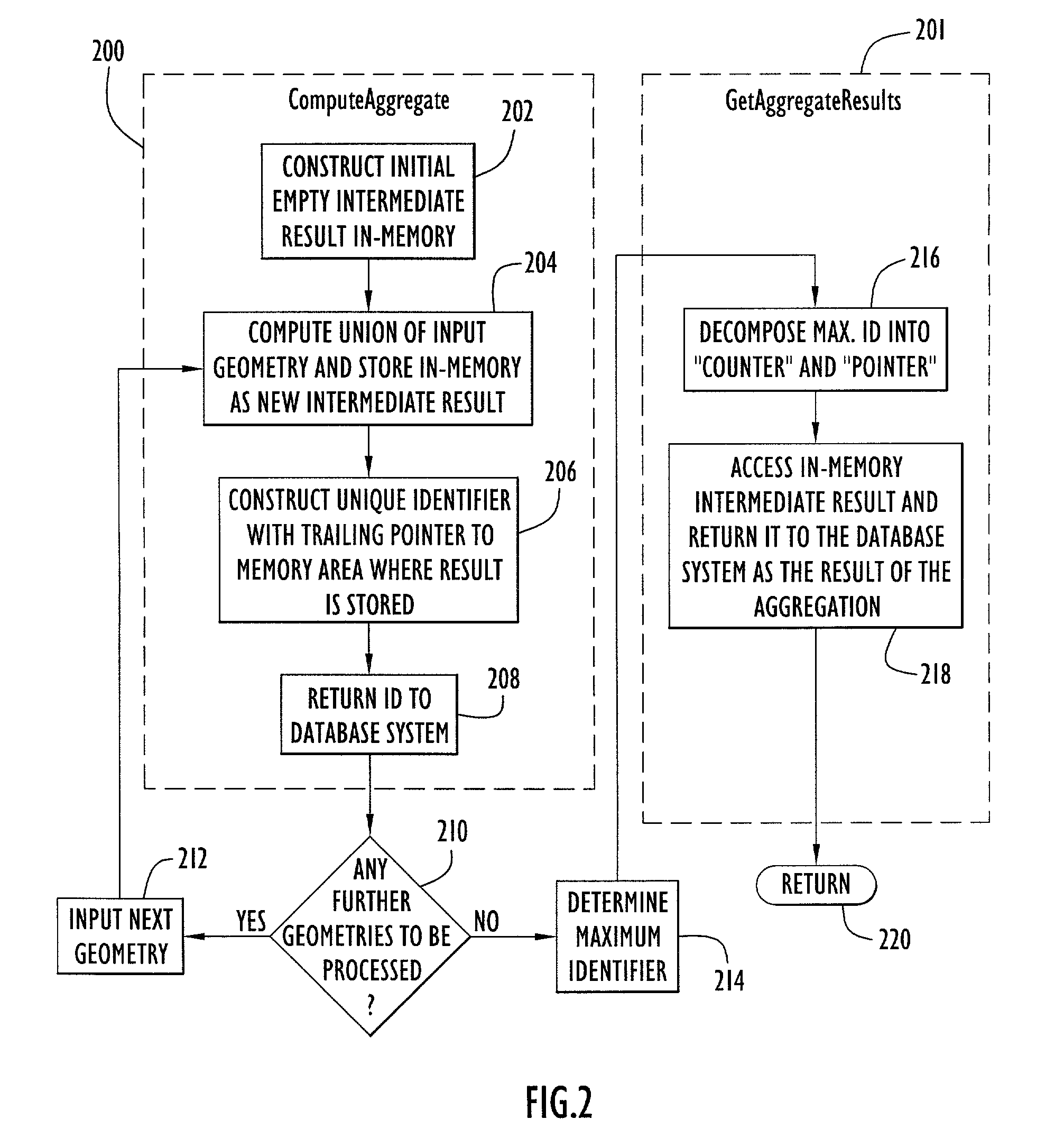User-defined aggregate functions in database systems without native support
a database system and user-defined aggregate technology, applied in the field of information processing and storage systems, can solve the problems of inability to easily inability to define and implement user-defined aggregate functions, and inability to support user-defined aggregate functions
- Summary
- Abstract
- Description
- Claims
- Application Information
AI Technical Summary
Problems solved by technology
Method used
Image
Examples
Embodiment Construction
[0022]The embodiments described below are described with reference to the above drawings, in which like reference numerals designate like components.
[0023]Embodiments of the invention are described here in terms of aggregating geometric shapes. However, the invention is not limited to constructing such aggregates of spatial objects, which are described here only for purposes of illustration. Rather, the invention is broadly applicable to constructing aggregates of entities, which by way of non-limiting example in addition to geometric figures include various types of database records, sets of values or numbers, physical objects, etc.
[0024]A way to write the query shown in Table 2 to obtain exactly the same result, but without using recursion, is described here using two new functions called “ComputeAggregate” and “GetAggregateResults.” Using structured query language (SQL) syntax, the following query shown in Table 3 can be used to obtain the same result that the query in Table 2 pr...
PUM
 Login to View More
Login to View More Abstract
Description
Claims
Application Information
 Login to View More
Login to View More - R&D
- Intellectual Property
- Life Sciences
- Materials
- Tech Scout
- Unparalleled Data Quality
- Higher Quality Content
- 60% Fewer Hallucinations
Browse by: Latest US Patents, China's latest patents, Technical Efficacy Thesaurus, Application Domain, Technology Topic, Popular Technical Reports.
© 2025 PatSnap. All rights reserved.Legal|Privacy policy|Modern Slavery Act Transparency Statement|Sitemap|About US| Contact US: help@patsnap.com



